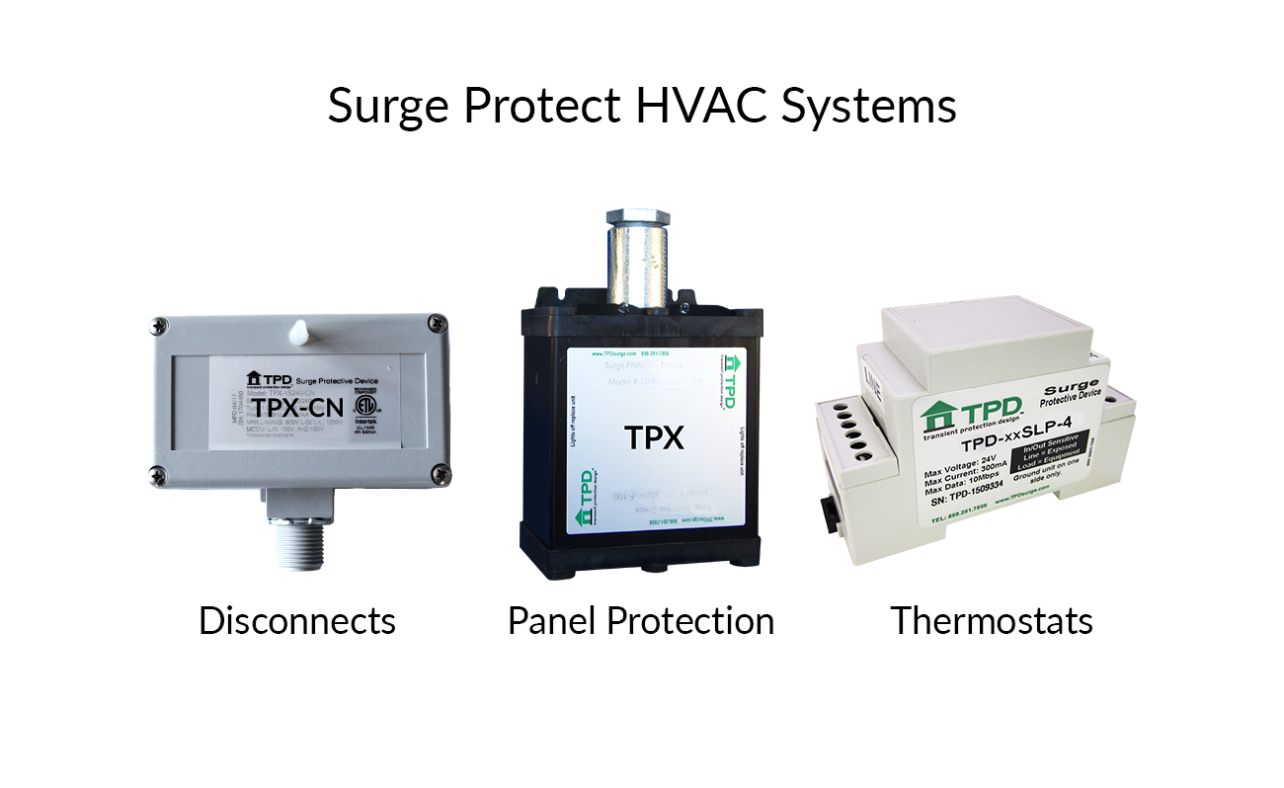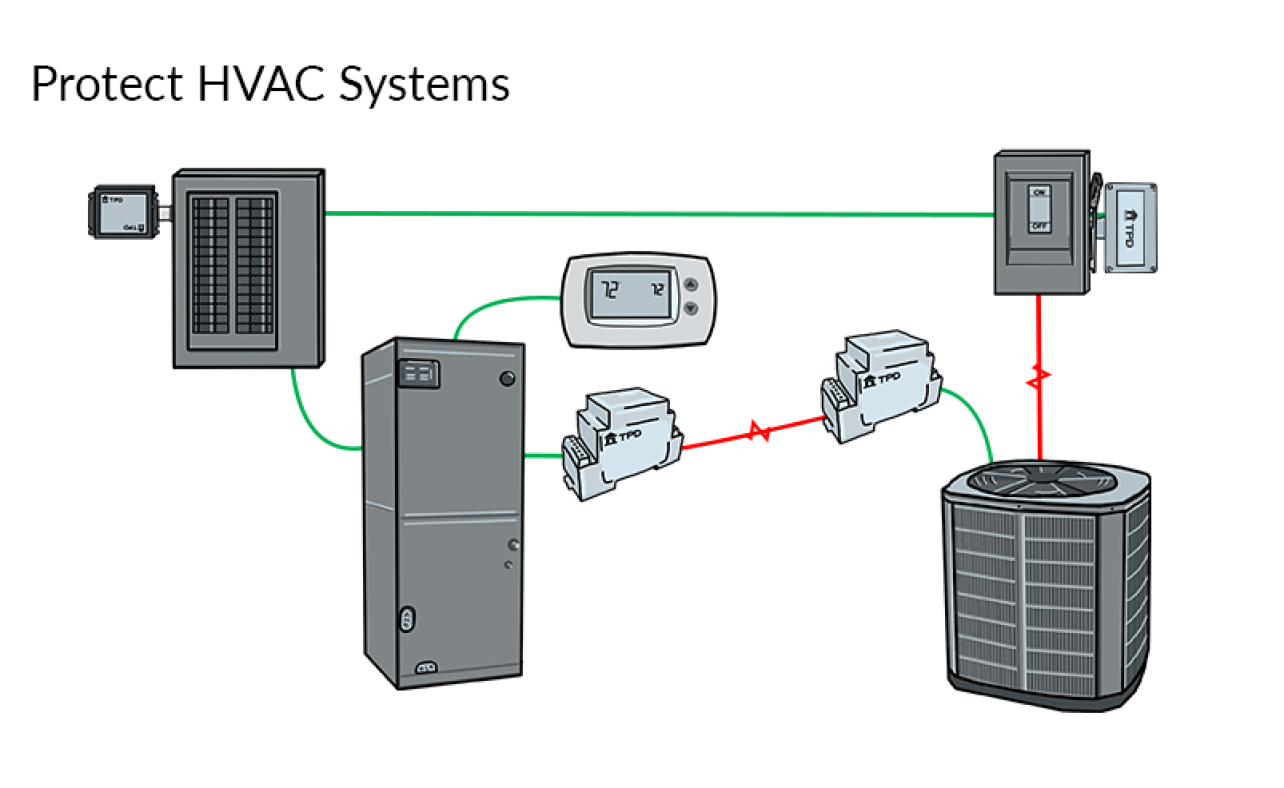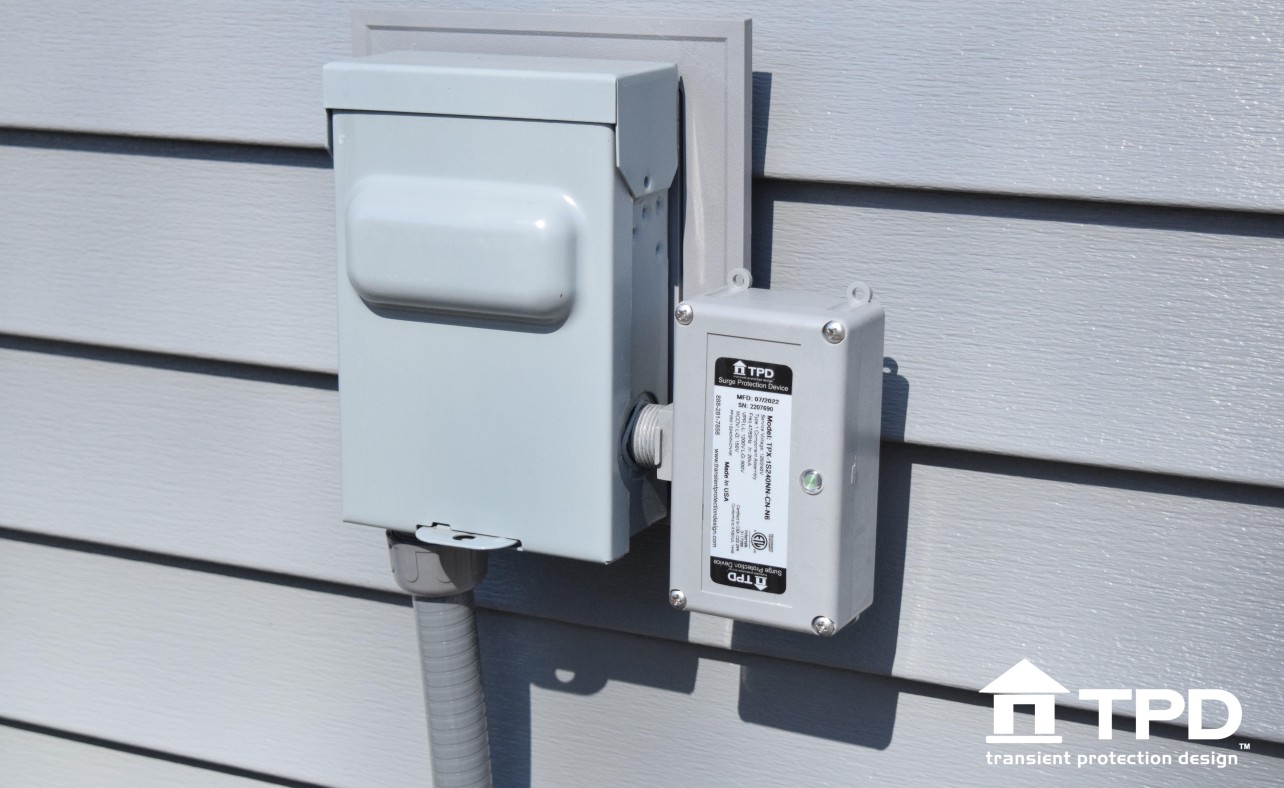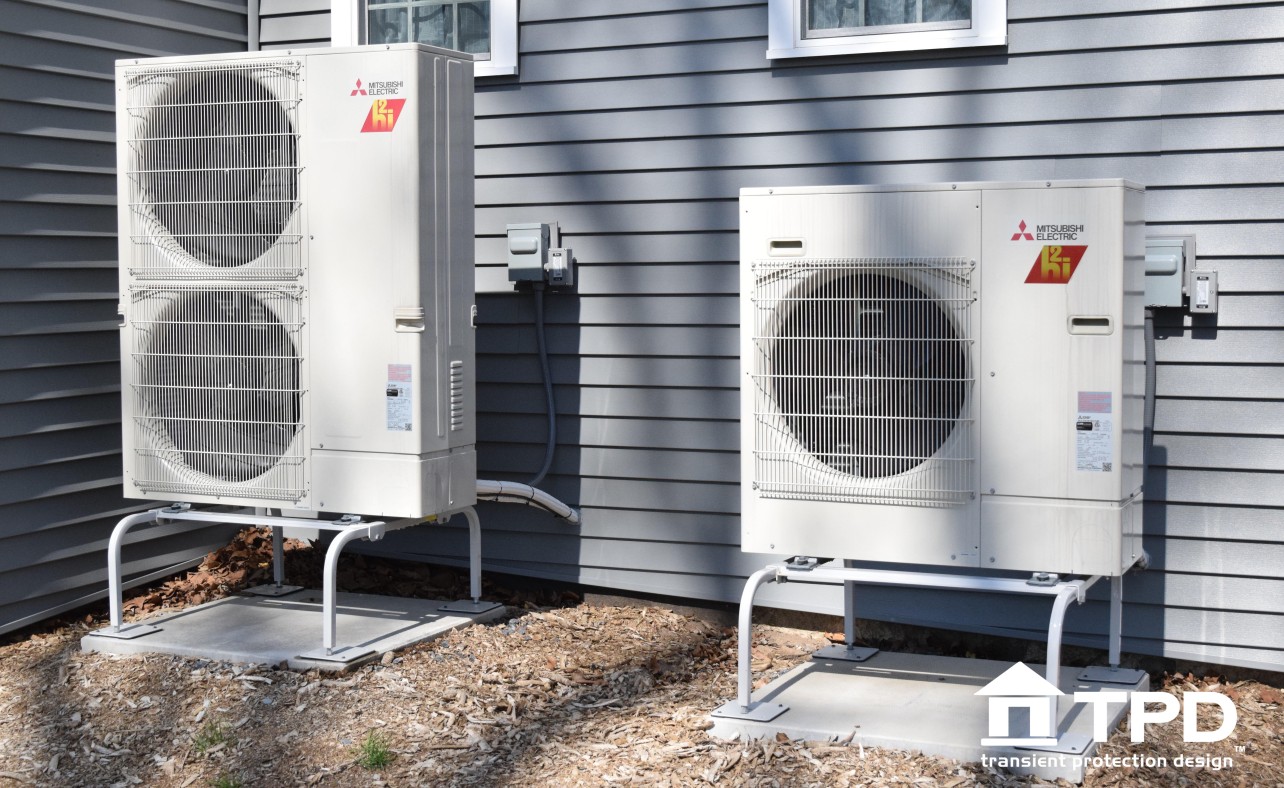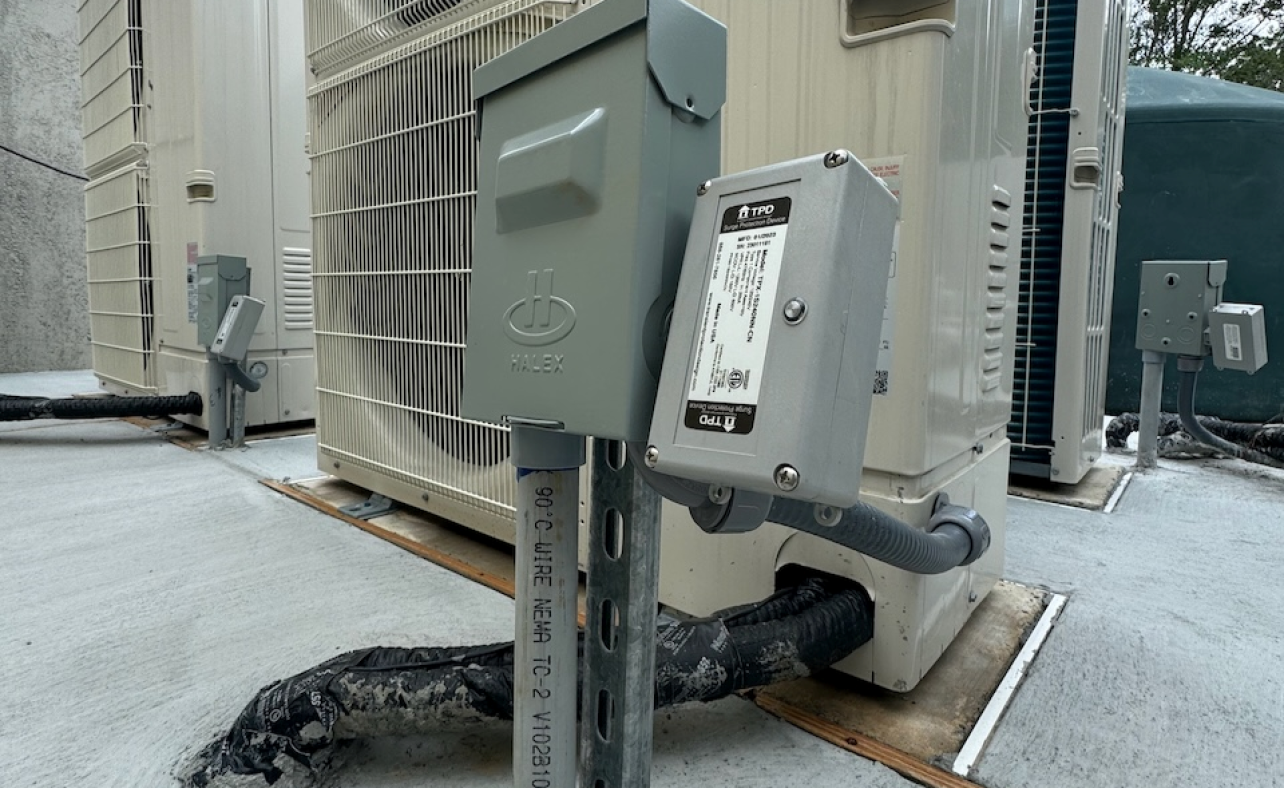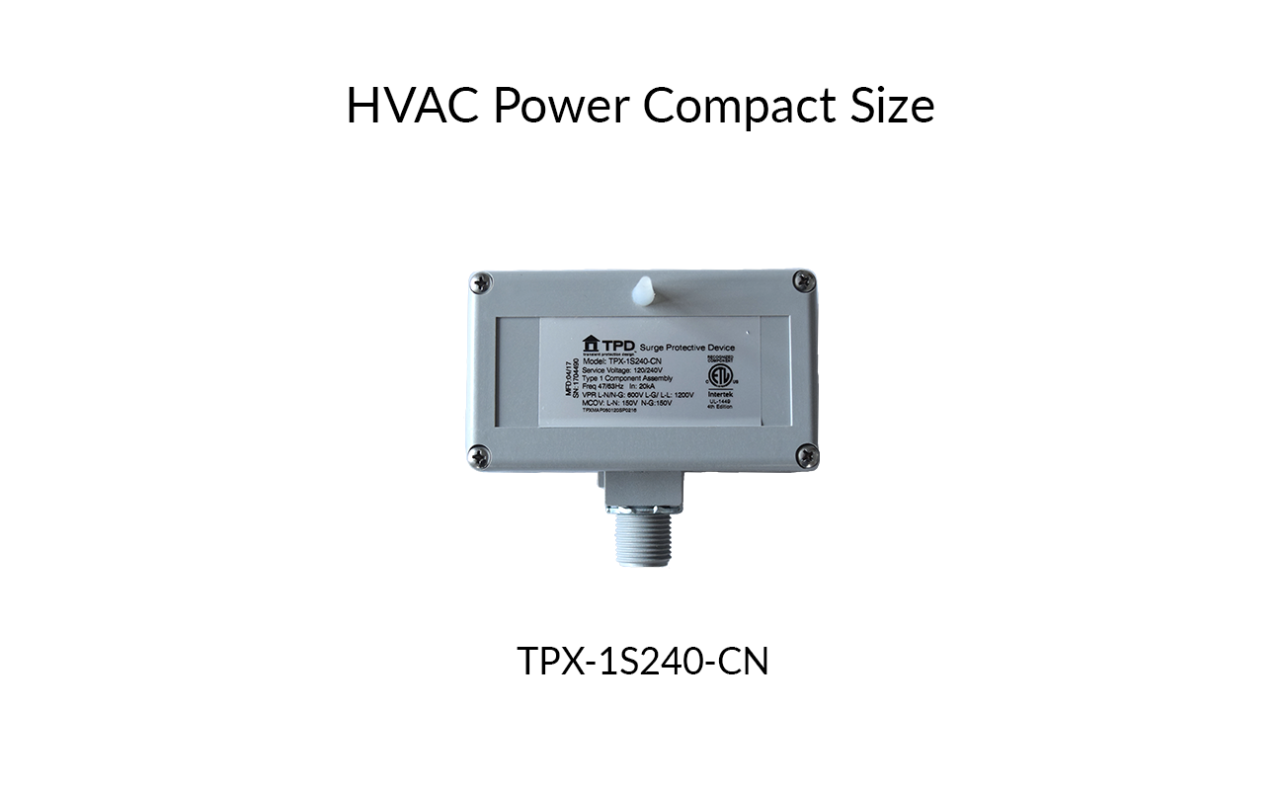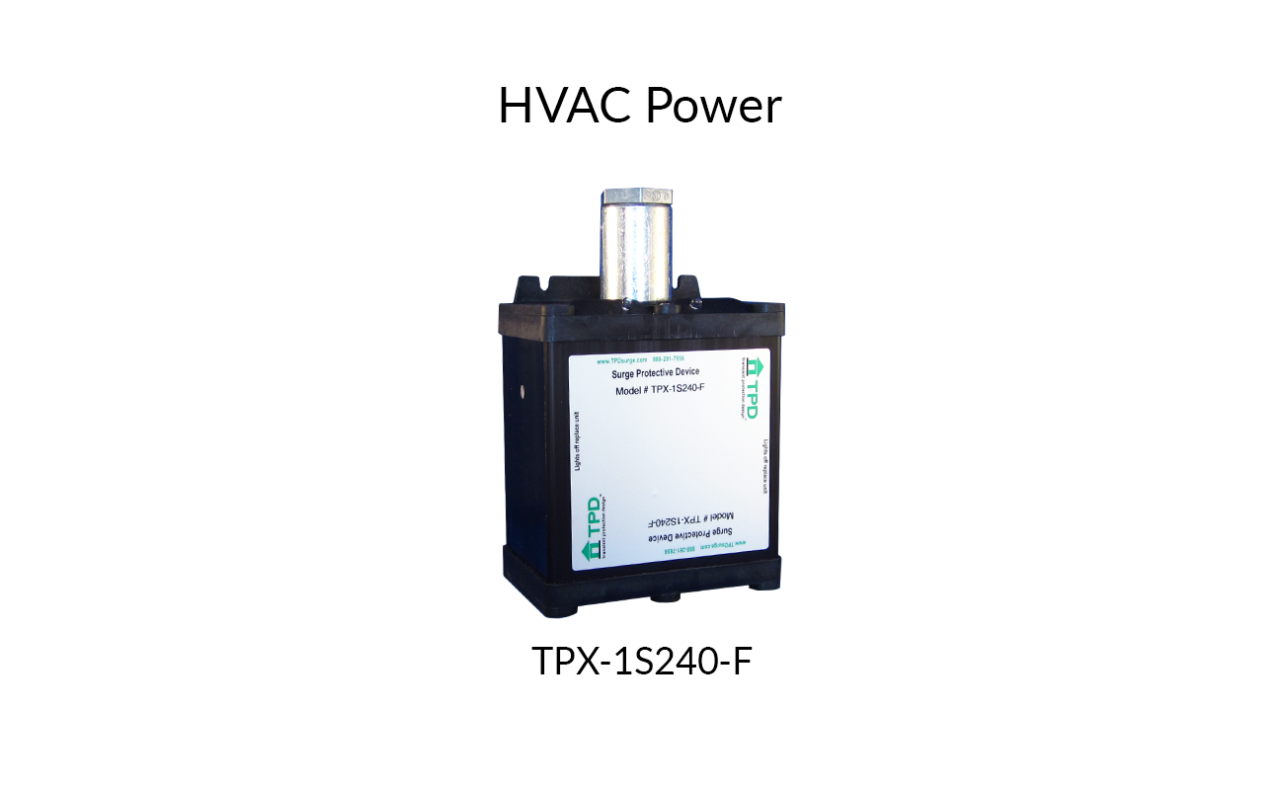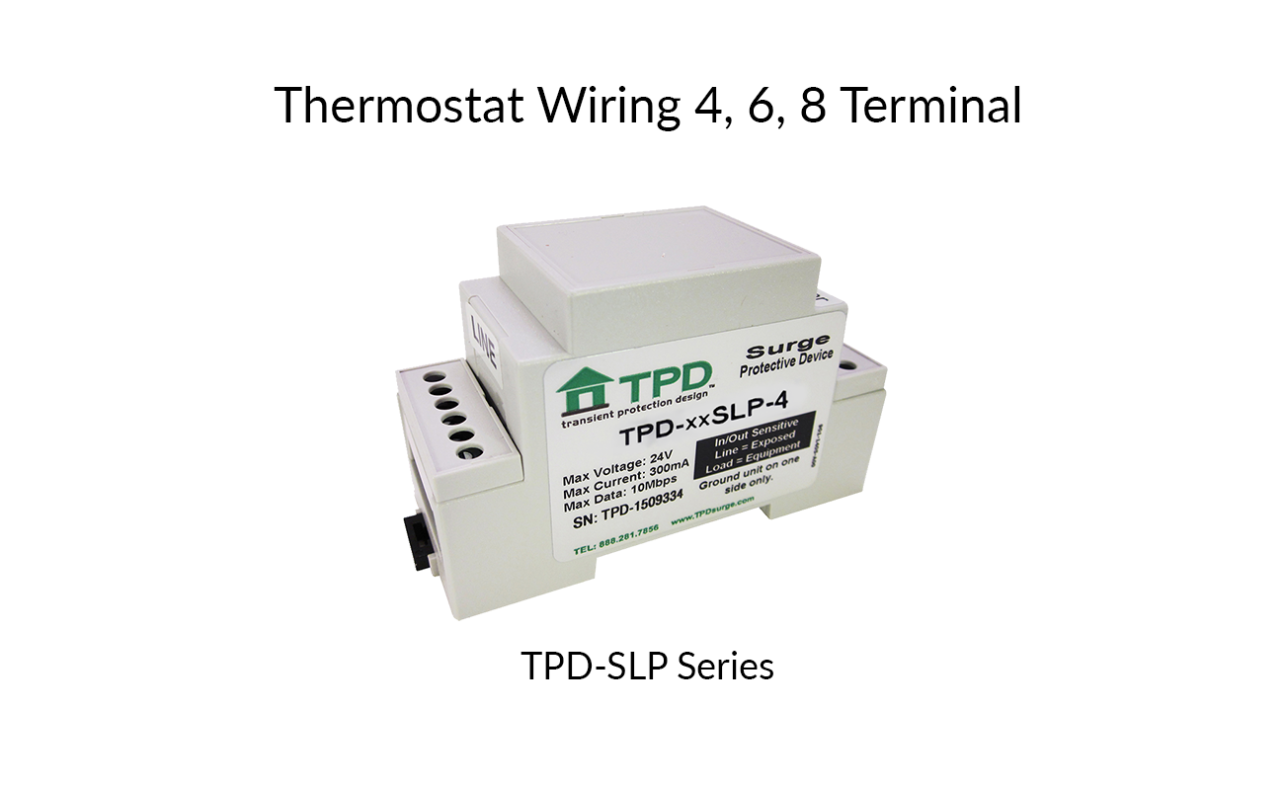HVAC System Surge Protection
Surge protection for HVAC systems manufactured by companies such as Johnson Controls, Trane, Mitsubishi, Fujitsu, Rheem, Daikin, and Carrier is a necessity for maintaining comfort, enhancing safety, and preventing costly downtime in both residential and commercial applications. To be confident your heating and cooling will not fail at the wrong time due to surge-related damage, use Transient Protection Design surge protection on low voltage pathways for HVAC heating and cooling systems, heat pumps, mini-splits, packaged heating and air systems, and thermostats from utility surges and lightning damaging or low voltage pathways from outdoor heat pumps. Elevate your peace of mind by fortifying your HVAC systems with TPD surge suppression.
TPX-1S240-CN HVAC Equipment and Disconnects
TPX-1S240-F Breaker Panels Powering HVAC Equipment
TPD-24SLP6 Thermostat Wiring 6 Terminal
HVAC equipment can introduce transients. These effects
are often brief and may not always be noticeable.
However, they can wear out or damage sensitive
electronic equipment over time, so taking preventative
measures is a good idea.
How To Protect HVAC Systems
Protect HVAC Equipment and Disconnects: TPX-1S240-F-CN
Surge protection can be installed at equipment disconnect or inside commercial HVAC equipment if there is room for installation. For residential application surge protection is usually installed at the disconnect powering the HVAC equipment.
Protect Breaker Panels Powering HVAC Equipment: TPX-1S240-F-100
Surge protection should be installed on all breaker panels especially those powering HVAC equipment. Not only does the HVAC equipment need protection but the rest of the home requires protection from the HVAC equipment. The HVAC equipment generates surges that can not only damage its own electronics but the electronics in the rest of the home.
Protect Thermostat Wiring: TPD-10SLP6
Surge protection can also be placed on low voltage wiring coming from outdoor unit before it gets to air handler and sophisticated thermostats. In large homes with multiple zones and thermostats surge protection may be required to eliminate ground potentials in the systems from one side of a structure to another.
The Importance of HVAC Equipment Surge Protection
Ensure Comfort
HVAC systems are the lifeline of comfortable living and working conditions. Surges can disrupt heating or cooling, leaving occupants uncomfortable, especially during extreme weather. In commercial settings, this can lead to reduced employee productivity and operational disruptions.
Protect Valuable Appliances and Equipment
Today's homes are filled with electronic marvels, from refrigerators to entertainment systems, while commercial HVAC systems feature intricate components like compressors and electronic controls. Voltage surges pose a real threat to these valuable assets. TPD surge protection acts as a guardian, shielding your appliances and equipment from harm, ultimately reducing maintenance and replacement costs.
Maintain Energy Efficiency
Surges can wreak havoc on HVAC equipment, causing increased repair costs and decreased efficiency. TPD surge protection ensures that your heating and cooling systems operate at peak efficiency.
Enhance Safety
Electrical surges can escalate into safety hazards, including the risk of electrical fires. TPD surge protection takes an active role in bolstering overall safety.
Preserve Property Value
Well-maintained HVAC systems enhance the overall value of residential properties. TPD surge protection safeguards the longevity and functionality of these systems, making your property more appealing to potential buyers.
Prevent Costly Downtime
In the realm of commercial settings, downtime can be financially devastating. When HVAC systems falter due to electrical surges, business operations grind to a halt, inconveniencing customers and leading to revenue loss. TPD surge protection serves as a proactive solution, minimizing the risk of downtime caused by HVAC equipment failures.

